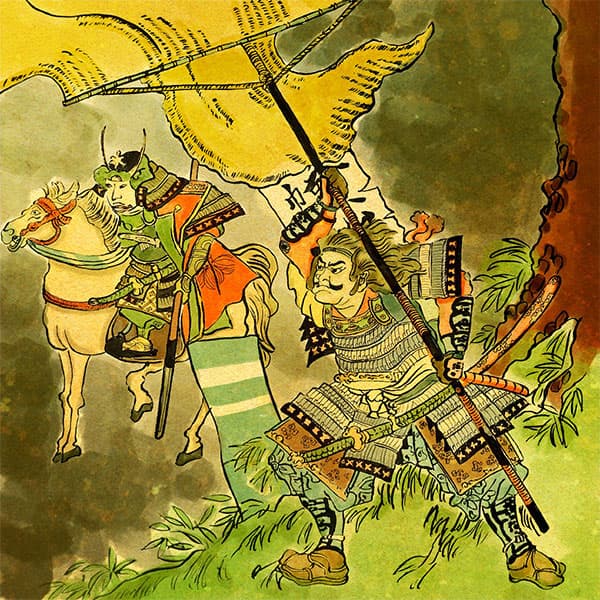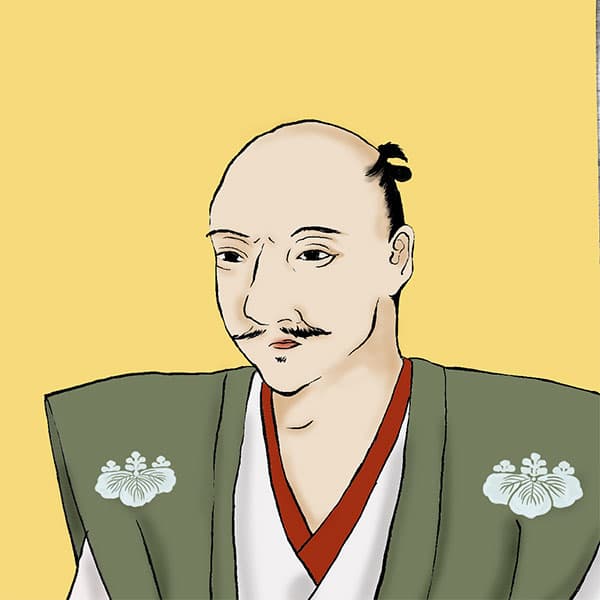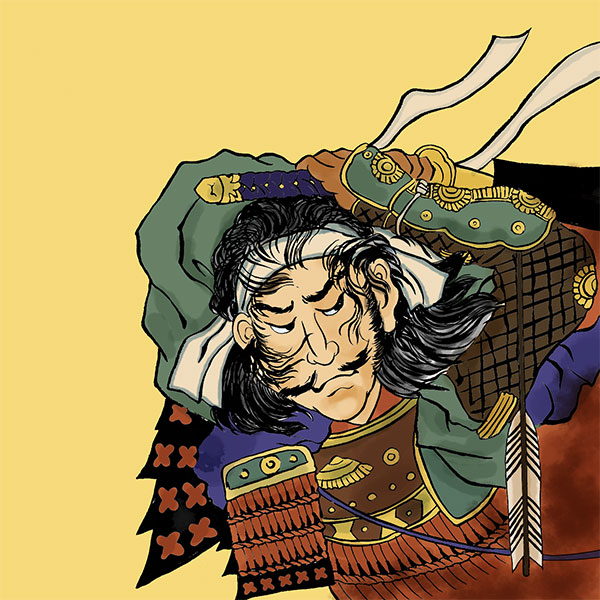Battle of Inabayama Castle (2/2)Oda Nobunaga conquers Mino

Battle of Inabayama Castle
- Article category
- case file
- Incident name
- Battle of Inabayama Castle (1567)
- place
- Gifu Prefecture
- Related castles

Gifu Castle

Kiyosu Castle

Komakiyama Castle

Inuyama Castle
National treasure tower
- people involved
The incident of taking Inabayama Castle quickly became known to the public. In particular, Nobunaga, who was intent on capturing Mino, immediately sent a messenger to Hanbei and demanded the surrender of Inabayama Castle on the condition that half of Mino be handed over to him. However, Hanbei refused and returned the castle to Tatsuoki a year later. Tatsuoki safely returned to Inabayama Castle, but the decline of the Saito family further accelerated.
There are theories that Hanbei's actions were ``to reprimand his lord'' and ``actually it was a rebellion,'' but the truth remains a mystery. After that, Hanbei handed over the headship of the family to his younger brother and went into seclusion. It was after the Battle of Inabayama Castle that Nobunaga sent Toyotomi Hideyoshi as a messenger to recruit Hanbei to join the Oda army.
Now, Nobunaga, on the other hand, attacked Inuyama Castle from Komakiyama Castle, and from Inuyama Castle he invaded Nakamino. They attack castles one after another. In 1565, Tadayoshi Sato, the lord of Kajida Castle in Kamo District, Mino, defected to Nobunaga. Tatsuoki dispatched soldiers to attack Kajida Castle. Nobunaga's side won this battle, which was called the ``Battle of Dodo.'' As a result, Nobunaga gained control of the Chuno region.
Betrayal of the Mino trio! "Battle of Inabayama Castle"
In August 1567, the Saito family's senior vassals, known as the ``Mino Sanninshu,'' Morinari Ando, Ittetsu Inaba, and Naomoto Ujiie defected to Nobunaga. All three are veteran vassals who have served the Saito family since the time of Dosan. Ando Morinari participated in the takeover of Inabayama Castle along with Takenaka Hanbei.
The three men make it clear to Nobunaga that they are on his side, and propose that they hand over hostages as proof of their support. Nobunaga agreed and sent Sadakatsu Murai and Hidemitsu Shimada to receive the hostages. However, without waiting to receive the hostages, Nobunaga dispatched troops towards Inabayama Castle.
According to the Nobunaga Koki, Nobunaga immediately led his troops to attack Mino and set up camp on Mt. Zuiryuji, a mountain next to Inabayama Castle. It is so fast that it surprises not only enemies but also allies.
While Tatsuoki Saito and his friends were wondering, ``Is that army an enemy or an ally?'' Nobunaga invaded Inabayama Castle. After burning down the castle town and isolating Inabayama Castle, they built a deer fence around the castle and surrounded it. At this time, the Mino Sanninshu arrived at Nobunaga's camp and were surprised at Nobunaga's swift actions.
Although Tatsuoki remained in captivity for about half a month, he surrendered to Nobunaga and escaped to Ise via the Nagara River. Thus, the battle of Inabayama Castle came to an end, and the Saito clan was destroyed. Approximately 11 years after receiving the ``Letter of Transfer of Mino Province'' from Dosan Saito, Nobunaga accomplished the unification of Mino Province.
By the way, after that, Tatsuoki colluded with the Miyoshi Sanninshu and maintained an anti-Nobunaga stance. He also seems to have had a cooperative relationship with Kenyo of Ishiyama Honganji Temple, who had tormented Nobunaga. Although his final moments are not well known, he was protected by Yoshikage Asakura and died at the age of 26 during the Battle of Tonezaka (Battle of Ichijodani Castle) in 1573, when Nobunaga destroyed the Asakura clan. He is said to have died.
Is Hideyoshi's "One Night Castle" a true story?
Regarding the battle for Mino, there is a famous story by Toyotomi Hideyoshi called ``Sunomata One Night Castle.'' It is not written in the ``Nobunaga Koki'' and seems to have first appeared in the ``Picture Book Taikoki'' written in the latter half of the Edo period, so there is a strong theory that it is a fiction. Although there are detailed descriptions in the Maeno Documents (Bukou Yawa) by the Maeno family, who served the Toyotomi family, discovered in the early Showa period, the Maeno Documents are suspected to be forgeries and lack authenticity. However, it is a very interesting story, so I will briefly introduce it.
In 1566, Nobunaga planned to build a castle in Sunomata in order to capture Inabayama Castle. First he ordered Nobumori Sakuma and then Katsuie Shibata to build it, but both were attacked by Saito's army and failed. Hideyoshi came forward and declared, ``I will complete it in seven days.'' Hideyoshi, entrusted by Nobunaga, gains the cooperation of the Kawanami Shu, a group of local magnates including Hachisuka Koroku, and proceeds with the construction of the castle while fighting against the Saito army.
The method Hideyoshi used was what we now call the prefabricated construction method. Taking advantage of the fact that Sunomata is surrounded by rivers, the wood is pre-processed upstream and secretly floated down the river at night to be transported to Sunomata. They then assembled the parts on site, built a horse stockade, and completed the fort in three days while fighting the enemy. Although it is described as a "castle" overnight, it seems to have actually been a simple fort.
By the way, the ``Nobunaga Koki'' records that there was a fort in Sunomata in 1561. At that time, it was a base for Ryūko's side, but Nobunaga captured it. After that, the fort was abandoned because Nobunaga changed his strategy for conquering Mino from attacking west Mino to attacking central and eastern Mino.
From “Inabayama Castle” to “Gifu Castle”
In the Battle of Inabayama Castle, Nobunaga burned down the castle town of Inabayama Castle. Even if Inabayama Castle was captured, it would be a waste of treasure if it remained as it was. In order to rebuild the castle town, Nobunaga moved his vassals to live there and established ``Rakuichi Rakuza'' to develop commerce. The name of the place was changed from Inokuchi to ``Gifu,'' and Inabayama Castle was also renamed to ``Gifu Castle.'' Nobunaga then set out to unify the country, using Gifu Castle as his base. Around this time, Nobunaga began using the red seal of ``Tenkafubu.''
Azuchi Castle was built in 1576, and after Nobunaga moved his headquarters there, Nobunaga's eldest son, Nobutada Oda, moved to Gifu Castle. After Nobutada died in the Honnoji Incident, the castle passed through several generations of lords, and was abandoned in 1601.
Currently, you can tour the reinforced concrete castle tower built in 1956. Although there is no trace of what it was like back then, it might be fun to see the ``Tenka'' that Nobunaga saw from Gifu Castle from the castle tower.
Reread the article about the Battle of Inabayama Castle
- people involved

- WriterNaoko Kurimoto(Writer)I am a former travel industry magazine reporter. I have loved history, both Japanese and world history, since I was a child. I usually enjoy visiting temples and shrines, especially shrines, and often do ``pilgrimages to sacred places'' themed around historical figures. My favorite military commander is Ishida Mitsunari, my favorite castle is Kumamoto Castle, and my favorite castle ruins is Hagi Castle. My heart flutters when I see the ruins of battle castles and the stone walls of castle ruins.








